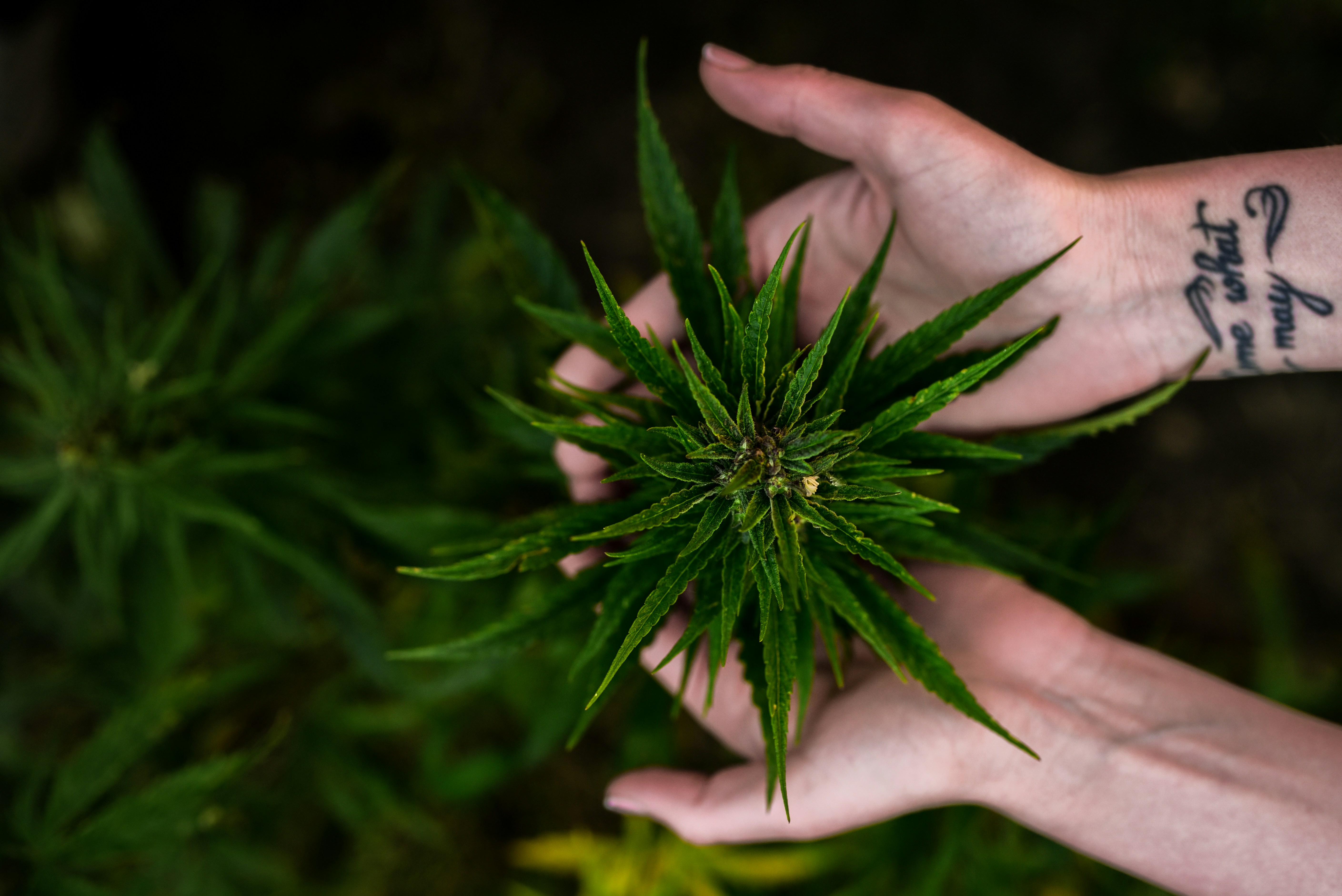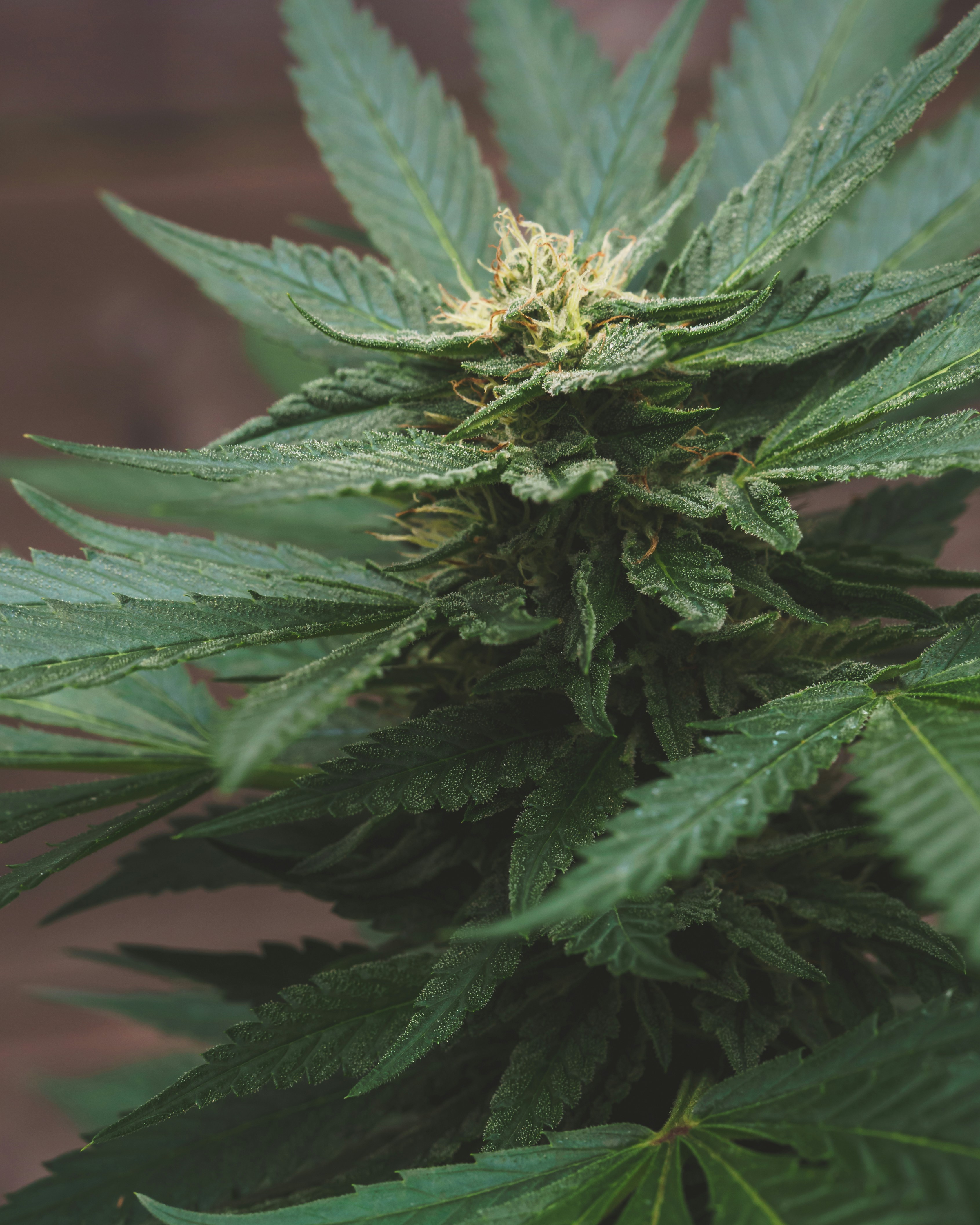Difference between Indica vs Sativa vs Hybrid Strains
Difference Between Indica vs Sativa vs Hybrid Strains
The world of cannabis is as diverse as it is intriguing.
From recreational users to medical patients, the choice of cannabis strains can significantly impact the experience.
Understanding the differences between indica, sativa, and hybrid strains is crucial.
It helps consumers make informed decisions, tailoring their cannabis use to their specific needs and preferences.
This article aims to shed light on these differences.
We delve into the origins, characteristics, and effects of these strains.
We also explore the science behind cannabis, focusing on cannabinoids and terpenes.
These compounds play a significant role in defining the effects of different strains.
The article further discusses the concept of hybrid strains.
These are bred to combine the best traits of indica and sativa, offering a balanced experience.
We also touch on the rise of delta-8 THC and its influence on the cannabis market.
Finally, we look at the future of cannabis strains, including the potential of genetic engineering.
Whether you're a seasoned cannabis connoisseur or a curious newcomer, this comprehensive guide is designed to deepen your understanding of cannabis strains.
Understanding Cannabis Strains
Cannabis strains are distinct varieties of the plant species Cannabis sativa.
Each strain has its unique genetic makeup, influencing its effects, aroma, flavor, and growth characteristics.
The term "strain" is commonly used in the cannabis industry to categorize these varieties.
It's based on their physical characteristics and intended effects.
The two primary types of cannabis strains are Cannabis sativa and Cannabis indica.
These classifications have been in use since the 18th century.
They are based on the plant's morphology and geographical origin.
However, with the advent of hybrid strains, the classification has become more complex.
Hybrids are bred from both indica and sativa strains, aiming to combine their desirable traits.

Historical Origins and Classification
The classification of cannabis into sativa and indica strains dates back to the 18th century.
Swedish botanist Carl Linnaeus first identified Cannabis sativa in 1753.
Later, in 1785, French biologist Jean-Baptiste Lamarck identified Cannabis indica as a different species.
He based this on the plant's physical characteristics and the different effects it produced.
This classification system, though somewhat simplistic, is still widely used today.
Morphological Differences
Indica and sativa strains exhibit distinct physical characteristics.
Sativa plants are typically tall and slender, with long, narrow leaves.
They have a lighter green color compared to indica strains.
On the other hand, indica plants are shorter and bushier.
They have broad, dark green leaves.
These morphological differences are a result of the plants adapting to their respective environments.
Geographical Origins and Typical Climates
Sativa strains originated near the equator.
They are native to countries like Colombia, Mexico, and Thailand.
These strains are accustomed to long, hot summers and have a longer flowering period.
Indica strains, on the other hand, come from harsher, mountainous climates.
They are native to countries like Afghanistan and Nepal.
These strains are used to short, harsh winters and have a shorter flowering period.
The Science of Cannabis: Cannabinoids and Terpenes
Cannabis strains differ not only in their physical characteristics but also in their chemical compositions.
The effects of a cannabis strain are largely determined by its cannabinoid and terpene content.
Cannabinoids are chemical compounds found in the cannabis plant.
They interact with the body's endocannabinoid system to produce various effects.
Terpenes, on the other hand, are aromatic compounds found in many plants, including cannabis.
They contribute to the strain's aroma and flavor and can also influence its effects.
Together, cannabinoids and terpenes create a synergy known as the "entourage effect".
This theory suggests that these compounds work better together than in isolation.
THC and CBD: The Primary Cannabinoids
The two most well-known cannabinoids are THC (tetrahydrocannabinol) and CBD (cannabidiol).
THC is the primary psychoactive compound in cannabis.
It's responsible for the "high" associated with cannabis use.
On the other hand, CBD is non-psychoactive.
It's known for its potential therapeutic benefits, such as reducing anxiety and inflammation.
The ratio of THC to CBD in a cannabis strain can greatly influence its effects.
For example, strains high in THC and low in CBD are typically more psychoactive.
Strains with a balanced THC to CBD ratio may offer a more mellow and balanced effect.
Strains high in CBD and low in THC are often chosen for their therapeutic benefits without the high.
Understanding the THC to CBD ratio can help consumers choose a strain that suits their needs and tolerance.
Terpene Profiles and Their Effects
Terpenes are another crucial factor in the effects of a cannabis strain.
There are over 100 different terpenes identified in the cannabis plant.
Each strain has a unique terpene profile, contributing to its distinct aroma and flavor.
For example, the terpene myrcene, often found in indica strains, has a musky, earthy aroma.
It's also associated with relaxing effects.
Limonene, common in sativa strains, has a citrusy aroma.
It's associated with uplifting effects.
Pinene, found in many strains, has a pine-like aroma.
It's known for its potential anti-inflammatory properties.
Understanding a strain's terpene profile can provide additional insight into its potential effects and benefits.
This knowledge can guide consumers in choosing a strain that aligns with their preferences and needs.
Indica Strains: Characteristics and Effects
Indica strains are one of the two primary types of cannabis.
They are known for their distinct physical characteristics and effects.
Indica plants are typically short and bushy with broad, dark green leaves.
They are often grown in cooler climates and have a shorter flowering time.
The buds of indica strains are usually dense and heavy.
They often have a strong, sweet or sour odor.
In terms of effects, indica strains are often associated with relaxation and sedation.
They are commonly used in the evening or before bed.
This is due to their tendency to produce a "body high".
Common Indica Effects and Uses
The effects of indica strains can vary depending on the specific strain and individual user.
However, they are generally known for their relaxing and calming effects.
Users often report feeling physically relaxed and sleepy after consuming indica strains.
They may also experience a sense of deep body relaxation.
Indica strains are often used to help with relaxation and stress relief.
They can also be used to promote sleep.
Some users find that indica strains help with pain relief.
They can also potentially help with muscle spasms and tremors.
Indica strains are often chosen for their potential to help with physical discomfort.
They are also popular among users seeking relaxation and a good night's sleep.
Indica in Medical Applications
In the medical cannabis community, indica strains are often chosen for their potential therapeutic benefits.
They are commonly used to help manage symptoms of a variety of conditions.
For example, they may be used to help with pain management.
This includes chronic pain, migraines, and arthritis.
Indica strains may also be used to help with sleep disorders.
This includes insomnia and other sleep-related issues.
They may also be used to help manage symptoms of anxiety and stress.
Some medical cannabis users find that indica strains help with nausea and loss of appetite.
This can be particularly beneficial for individuals undergoing treatments such as chemotherapy.
However, it's important to note that the effects of cannabis can vary greatly between individuals.
Therefore, it's always recommended to start with a low dose and gradually increase as needed.
It's also important to consult with a healthcare provider when using cannabis for medical purposes.
Sativa Strains: Characteristics and Effects
Sativa strains are the second primary type of cannabis.
They are known for their unique physical characteristics and effects.
Sativa plants are typically tall and thin with narrow, light green leaves.
They are often grown in warmer climates and have a longer flowering time.
The buds of sativa strains are usually light and fluffy.
They often have a fresh, fruity, or earthy aroma.
In terms of effects, sativa strains are often associated with uplifting and energetic experiences.
They are commonly used during the day or when active.
This is due to their tendency to produce a "head high".
Common Sativa Effects and Uses
The effects of sativa strains can vary depending on the specific strain and individual user.
However, they are generally known for their uplifting and energizing effects.
Users often report feeling mentally alert and focused after consuming sativa strains.
They may also experience a sense of euphoria or increased creativity.
Sativa strains are often used to help with mood elevation and energy boost.
They can also be used to promote creativity and focus.
Some users find that sativa strains help with fatigue and depression.
They can also potentially help with mood disorders and ADHD.
Sativa strains are often chosen for their potential to help with mental and emotional well-being.
They are also popular among users seeking an uplifting and energizing experience.
Sativa in Creativity and Energy Boosting
In the context of creativity and energy boosting, sativa strains are often the go-to choice.
They are known for their potential to stimulate the mind and inspire creativity.
For example, they may be used by artists, writers, and musicians to enhance their creative process.
This includes promoting divergent thinking and idea generation.
Sativa strains may also be used to help with focus and productivity.
This includes tasks that require mental clarity and concentration.
They may also be used to help manage symptoms of fatigue and lethargy.
Some users find that sativa strains help with motivation and energy levels.
This can be particularly beneficial for individuals dealing with fatigue or low energy.
However, as with all cannabis use, it's important to start with a low dose and gradually increase as needed.
It's also recommended to consult with a healthcare provider when using cannabis for specific purposes.
Finally, it's worth noting that the effects of cannabis can vary greatly between individuals.
Therefore, personal experimentation and observation are key to finding the most beneficial strain.
Hybrid Strains: Combining the Best of Both Worlds
Hybrid strains are a combination of both indica and sativa strains.
They are bred to combine the best characteristics of both types.
This includes the physical characteristics of the plants, as well as their effects.
Hybrid strains can be bred to be either indica-dominant, sativa-dominant, or balanced.
This allows for a wide range of effects and uses.
Hybrid strains are often created to target specific effects or to treat certain conditions.
For example, a hybrid strain might be bred to have the uplifting effects of a sativa strain and the pain-relieving effects of an indica strain.
This allows users to experience the benefits of both types in one strain.
Hybrid strains are also often bred for their unique flavors and aromas.
This is achieved by combining the terpene profiles of different strains.
The Spectrum of Hybrid Strains
The spectrum of hybrid strains is vast and diverse.
This is due to the endless combinations of indica and sativa strains that can be bred together.
On one end of the spectrum, you have indica-dominant hybrids.
These strains lean more towards the physical and relaxing effects of indica strains.
On the other end, you have sativa-dominant hybrids.
These strains lean more towards the uplifting and energizing effects of sativa strains.
In the middle, you have balanced hybrids.
These strains aim to provide a balance of both indica and sativa effects.
This can result in a well-rounded experience that includes both physical relaxation and mental stimulation.
Breeding Hybrids for Specific Effects
Breeding hybrids for specific effects is a complex process.
It involves carefully selecting parent strains that possess the desired traits.
These traits can include anything from the strain's effects and potency to its flavor and aroma.
The goal is to create a new strain that combines these traits in a unique and beneficial way.
For example, a breeder might want to create a hybrid strain that has the uplifting effects of a sativa strain and the pain-relieving effects of an indica strain.
To achieve this, they would need to select parent strains that possess these traits.
They would then breed these strains together, carefully selecting the offspring that best represent the desired traits.
This process can take many generations and requires a deep understanding of cannabis genetics.
However, the result can be a unique and powerful hybrid strain that offers a range of benefits.
This is why hybrid strains are such a crucial part of the cannabis market.
They offer the potential for tailored experiences and targeted effects.
This makes them a popular choice among both recreational and medical cannabis users.
Delta 8 THC: A New Player in the Cannabis Market
Delta 8 THC is a minor cannabinoid found in the cannabis plant.
It is similar to the more well-known delta 9 THC, but with some key differences.
Delta 8 THC is less potent than delta 9 THC.
This means it can provide a milder, more manageable high.
This makes it a popular choice for those who find the effects of delta 9 THC too intense.

Delta 8 THC is also legal in many places where delta 9 THC is not.
This is due to its classification as a hemp-derived product.
However, the legal status of delta 8 THC can vary by region.
It is always important to check local laws before purchasing or using delta 8 THC products.
Sativa vs Indica vs Hybrid Delta 8 Products
Just like with delta 9 THC, delta 8 THC can be found in sativa, indica, and hybrid strains.
This means that users can choose a delta 8 THC product that aligns with their desired effects.
For example, a sativa-dominant delta 8 THC product might provide a more uplifting and energizing high.
On the other hand, an indica-dominant delta 8 THC product might provide a more relaxing and sedating high.
Hybrid delta 8 THC products can provide a balance of these effects.
This allows users to tailor their delta 8 THC experience to their specific needs and preferences.
It's important to note that the effects of delta 8 THC can vary by individual.
Factors such as tolerance, body chemistry, and method of consumption can all influence the effects.
As with any cannabis product, it is recommended to start low and go slow with delta 8 THC.
This can help users find the right dose and product for their needs.
The Sativa vs Indica vs Hybrid Chart: A Quick Reference Guide
Navigating the world of cannabis strains can be complex.
A quick reference guide can be a valuable tool.
The sativa vs indica vs hybrid chart provides a snapshot of the key characteristics of each strain type.
This chart can help users understand the typical effects, flavors, and uses of sativa, indica, and hybrid strains.
For example, the chart might indicate that sativa strains are often associated with uplifting and energizing effects.
Indica strains, on the other hand, might be linked with relaxation and sedation.
Hybrid strains can offer a balance of these effects, depending on their specific genetic makeup.
It's important to remember that individual experiences can vary.
The chart should be used as a starting point, not a definitive guide.
Personal experimentation and experience are key to finding the right strain for each individual.
The Future of Cannabis Strains and Genetic Engineering
The future of cannabis strains is exciting and full of potential.
Advancements in genetic engineering are paving the way for new possibilities.
Scientists are now able to manipulate the genetic makeup of cannabis plants. This allows them to create strains with specific characteristics.
For example, they might engineer a strain to have a high CBD content and low THC content. This could be beneficial for medical patients who want the therapeutic benefits of CBD without the psychoactive effects of THC.
As our understanding of cannabis genetics continues to grow, so too will the diversity and specificity of cannabis strains.
Conclusion: Making Informed Choices
Understanding the differences between indica, sativa, and hybrid strains is crucial for making informed cannabis choices.
Whether you're a medical patient seeking relief from specific symptoms, or a recreational user looking for a particular experience, knowledge of cannabis strains can guide your selection.
Remember, everyone's response to cannabis is unique. It's important to start slow, monitor your reactions, and adjust your choices as needed.
Recent Posts
-
Illegal THC Vapes in Texas: Safe Alternatives You Can Enjoy
In recent years, Texas has tightened regulations around THC vapes, making many products illegal to b
-
The Refreshing Rise of THC Seltzers: Benefits, Effects, and Duration Explained
THC Seltzers The world of cannabis-infused beverages is expanding fast — and THC seltzers are leadin
-
Top CBD Gummies for Better Sleep
Sleep is vital for our health and well-being. Yet, many of us struggle to get a good night's rest.En





